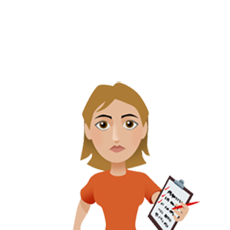Planning Summer Days: Rhythm and Routine with Kids

Summer! Kids are excited. Teachers are relieved. Parents around the country start feeling a familiar knot in the pit of their stomachs about the change of routine with kids in summer – especially parents dealing with ADHD kids. Somewhere in their minds, they are thinking,
“Now what? What do I do with my energetic, often scattered, mile-a-minute child, all day, every day for the next ten weeks?”
It seems daunting at best, and is downright overwhelming to many of you. You are not alone. I hear these comments every spring.
Here's the good news: attention to the natural rhythm and routine with kids can take some of the stress away. You can take advantage of your child's biology to set them up for success.
Article continues below...
Want to Motivate Kids?
Download a free tipsheet "The Parent's Guide to Motivating Your Complex Kid" to help your child find the motivation to do... anything and everything!
Summer Rhythm and Routine with Kids
Generally, the school year goes more smoothly than summer because there is a consistent and predictable routine every day. Routine helps your child regulate, and makes your days more peaceful.
Summer's daily rhythm and routine with kids doesn't have to include attending a camp or program that is structured. You can create this rhythm at home, as well. The routine should consistently include wake-up times, sequence of activities, eating, bathing and sleeping times.
Most kids with ADHD do not cope well with changes in established routines and expectations, so the more quickly you establish a daily/weekly rhythm, the better it is likely to go.
Timing
In creating your daily/weekly rhythm, consider your child's natural biorhythms. Children with ADHD often follow a typical pattern of alertness and ability to focus. Alertness throughout the day generally comes in two waves:
-
- a lengthy period of high alert time from mid-morning to early afternoon
- a second, albeit lower, alert time in the evening after dinner hour
The other periods of the day are “low alert” periods. Low alertness needs to be considered when creating a schedule.
A day that considers natural rhythm and routine with kids would look something like this:
-
- a brief period of “start-up” in the mornings (especially if your child is taking stimulants), which would include eating breakfast and looking at an age-appropriate magazine or puzzle book.
- next, schedule activities such as chores or tutoring. (According to the Premack principle, during this period of high alertness, chores, tutoring, or other less desirable tasks should happen before fun and exciting activities.)
- as you head into later morning, plan for mind and body engaging play such as traveling by bike, going to the park, nature hikes, going to the beach and tide pooling, making sand castles/sculptures (this can be themed by week), going swimming, or play-dates.
- this is also a good time to host group get-togethers.
- siesta time follows as your child hits a natural lull in their day. Create a “boredom grab bag” for the downtime. Make a bag with activity cards for your child to choose from during downtime. Make it clear that it is the child's ‘job' to entertain themselves by using the activities in the bag, or thinking of alternate choices. The grab bag builds independence, initiation and perseverance skills, while preventing you from being a constant cruise director.
- late afternoons/early evenings are a good time for any activity requiring minimal persistence and/or high natural interest – movie time, screen time, or video games. Save these activities for after the siesta time.
- evenings after dinner are great for non-competitive games, walks outside, star gazing and story-telling. Your child is at a creative peak, but has minimal attention – keep this in mind when devising activities and setting expectations.
- evening is NOT a good time to schedule a large dinner party at which you expect your ADHD child to sit quietly and behave at a table of mostly adults.
- plan for a screen-free hour prior to bed-time, in which your child can wind down from the day, read or be read to, and head to bed.
Deep sigh of relief. Summer vacation may not be so bad after all. In fact, it is sounding better and better by the moment. Creating a summer routine with kids takes a little planning and forethought.
If it still seems daunting, take another deep breath. Find a friend or get a coach to help you take the information here and put it into action. And remember that the time spent planning will reduce your stress, and help you set your children up for success. After all, doesn't everyone deserve to enjoy your summer!?


